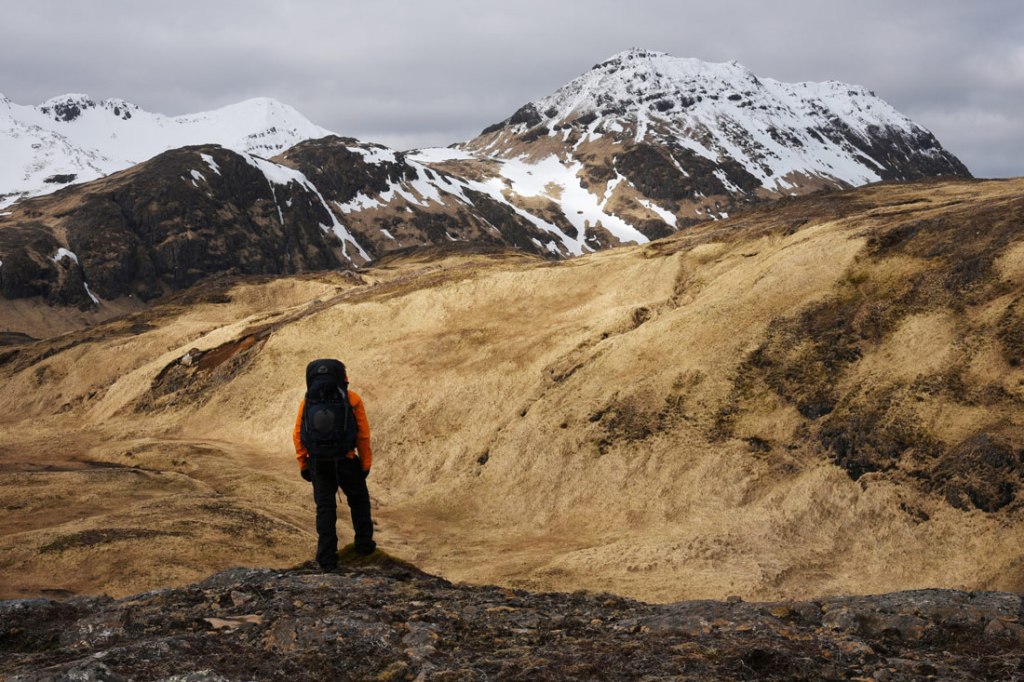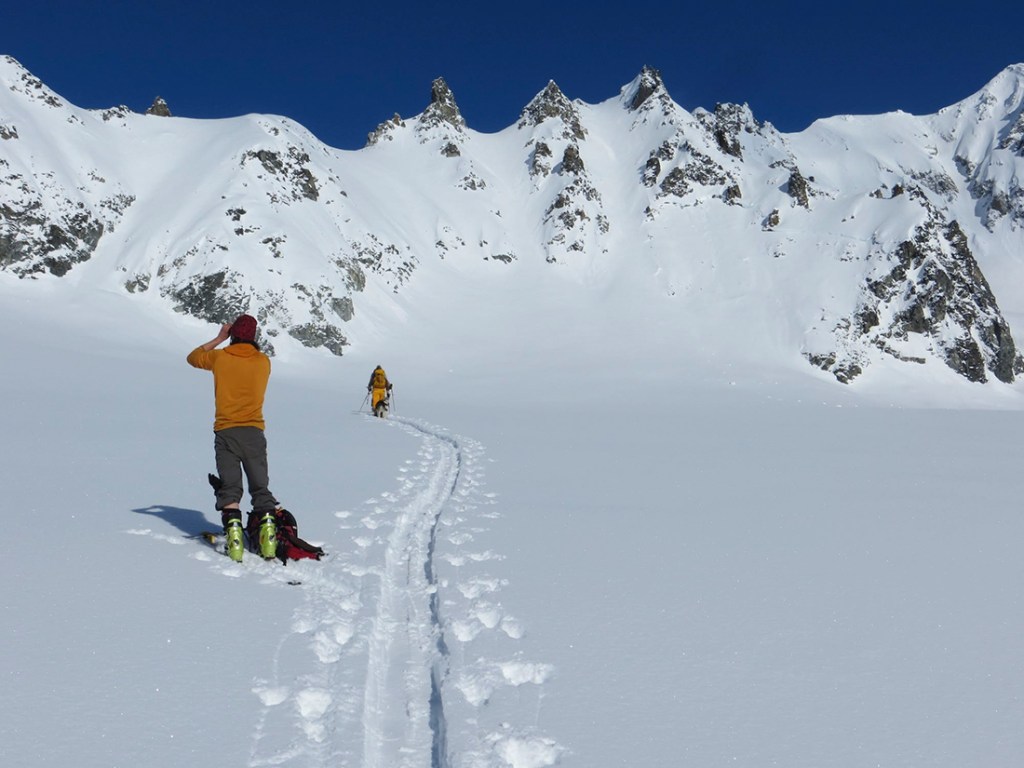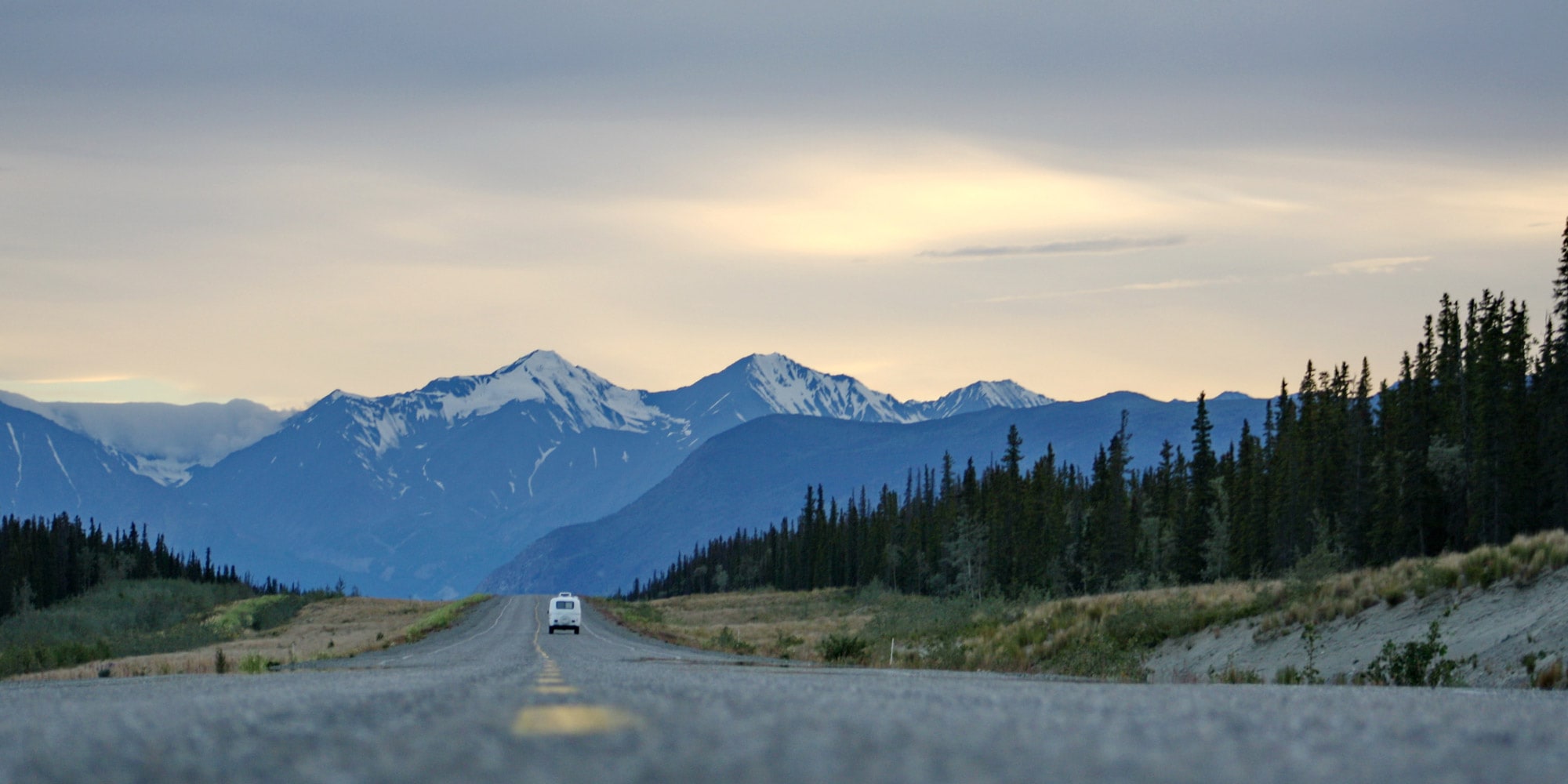With 39 mountain ranges, more than 3,000 rivers, 1,800 named islands and 17 of the 20 highest peaks in the U.S., the basic math of Alaska is impressive, but the wild beauty those numbers can’t convey is even grander. Along the southern coast, humpback whales, orcas and sea lions patrol tucked-away inlets, deep fjords and open bays. In the interior, grizzly bears browse berry thickets and salmon-rich rivers, moose plow through snow-covered valleys and caribou navigate windswept sand dunes on the edge of the Arctic Circle.
Alaska’s sheer variety allows adventurers to travel any way they’d like. Roadtripping hikers can cruise between campgrounds that offer quick access to day hikes, while those seeking more isolation can find their own path in the vast backcountry. Kayakers can explore the fjords, lakes and icy rivers. Cyclists can pedal winding roads that lead deep into national parks or shred singletrack along alpine ridges.
But with so many activities in Alaska to choose from, it can be hard to know where to start. That’s where we come in. Here’s a primer on some of our favorite places to hike, cycle, paddle, ski and snowshoe in the Land of the Midnight Sun.
Hiking

Backcountry hiking on Alaska’s Adak Island. (Photo Credit: Paxson Woelber)
The best hike in Alaska is the one that you discover yourself. Endless backcountry opportunities encourage a spirit of exploration that’s uncommon—and in some cases, discouraged—in most of America’s national parks and protected areas. But that freedom demands respect for Alaska’s extreme conditions. Careful trip planning and previous backcountry experience are necessary for most jaunts. So, if it’s your first time, consider hiring a guide service to introduce you to the joys of going off-trail.
For hiking experiences that are easier to tackle in a day, consider a few of Alaska’s most popular trails, including:
Worthington Glacier Ridge Trail
Worthington Glacier State Park is a wonderful place for a day trip if you’re basing your Alaska adventure out of Valdez. This ridge-topping, 1.3-mile one-way hike climbs quickly—1,322 feet of elevation gain in just under a mile and a half—but the view is well worth the effort. At the top, you can snap photos of Worthington Glacier and Thompson Pass. The landscape is especially stunning in the spring when wildflowers blanket the valley below.
Root Glacier Trail
Dip your toes into the majesty of Wrangell-St. Elias National Park on this moderate 2.2-mile trek to the base of Root Glacier. Cross rushing creeks and follow in the footsteps of gold miners who once took this route to seek their fortunes in the Erie Mine, nearby. Complete the hike as an out-and-back, or bring your tent and stay the night at one of the sites scattered along the trail’s end. Mountaineers who want to explore more of the area can also use this as an excellent basecamp and entry point for pursuits that delve deeper into the park.
Savage Alpine Trail
The 4.3-mile Savage Alpine Trail offers sweeping views of Denali’s soaring summit on clear days. Starting from the Savage River Campground, hikers follow a series of switchbacks over a ridge before descending toward Savage River. The trail ends back at the Denali Park Road, where you can catch a free shuttle back to the Savage River Campground or walk along the road to finish the hike as a loop.
Eielson Alpine Trail
Catch one of Denali’s shuttle buses to reach the Eielson Visitor Center and the start of the Eielson Alpine Trail. The short (.8 miles one-way) albeit steep route heads to the top of Thorofare Ridge for stunning views deeper into the park’s wildflower-filled valleys, Muldrow Glacier, Mount Galen and Denali.
Kayaking
Deep, protected fjords, calving glaciers, rugged coastlines and an abundance of marine life make Alaska a prime destination for kayakers. Opportunities to go kayaking are easy to find in established coastal towns like Valdez, Seward and Homer. For more off-the-beaten-path destinations, experienced paddlers can hook up with an air charter service that handles kayaks. These services open up far-flung paddling spots like Lake Clark, for extremely isolated multiday trips. Here are a few of the most sought-after places to dip your paddle in Alaska.
Kenai Peninsula
Kenai National Park and the waters surrounding it are a mecca for more experienced paddlers who can handle the potential for rougher conditions coming in from the Gulf of Alaska. Kayakers can watch for orcas, humpback whales, porpoises, sea lions and sea otters, while exploring a treasure trove of routes that pass towering glaciers and untouched coastlines. Most trips start from Seward and the shores of Resurrection Bay, but kayakers can also jumpstart their trip with a water taxi to nearby launch points in Aialik Bay, Northwestern Lagoon or Bear Glacier Lagoon.
Prince William Sound
A maze of quiet, forested coves surround the open waters of Prince William Sound, where paddlers are surrounded by the snowy peaks of the Chugach and Kenai mountains. Entry points in Whittier and Valdez make it an easy paddling destination to reach. And, since most areas are well-protected, it’s an ideal spot for new kayakers looking for their first experience on the water.
Bartlett Cove
A few miles from the tiny town of Gustavus, Bartlett Cove is the starting point for kayakers who want to explore the heart of Glacier Bay National Park. Here, expect to spend your days gliding through cobalt-blue fjords flecked with the crumbs of calving glaciers and watching for breaching humpback whales. Rental services are available in Gustavus, along with guides, and reservations are advised well in advance. Those who want to extend their visit can bring along a tent and camp out in the park’s backcountry, where the rocky shoreline gives way to thick, moss-covered forests.
Cycling
It’s no surprise that Alaska’s limitless wilderness offers plenty of opportunities for two-wheeled travelers to find a bit of adventure. In the summer, everything from paved city paths to epic singletrack routes entertain road cyclists and mountain bikers. And in the winter, you can hop on a fat bike to keep your feet on the pedals along frozen trails.
Road Biking
In Denali National Park, the first 15 miles of Denali Park Road are paved and reward riders with incredible views of its namesake mountain and surrounding valleys. Beyond that, 77 miles of gravel beckon cyclocross riders further toward the park’s mountain-studded horizon. If you’re based out of Anchorage, the Tony Knowles Coastal Path (11 miles) is a great combo of city cycling, coastal views and forest solitude. And in Girdwood, the 12-mile Bird to Gird Trail traces the shores of Turnagain Arm—an inlet off the Gulf of Alaska—on a paved path beloved by cyclists, hikers and, more often than not, cross-country skiers.
Mountain Biking
If you’re a mountain biker, don’t miss the singletrack up Resurrection Pass, which weaves between alpine meadows and boreal forests on the Kenai Peninsula. Go the full length, or cut down Devil’s Creek to zip past quiet lakes and waterfalls on your way back down.
If you’re near Fairbanks and looking to ride, check out the Inner and Outer loops at the Ester Dome Singletrack Happy Valley Trail System. The intermediate routes both wind through aspen forests and sport natural and man-made features like berms, small jumps and rock gardens.
And in Anchorage, you don’t even have to leave the city to find amazing riding. Kincaid Park is just a 15-minute drive southwest from REI’s Anchorage store, and features 22 miles of singletrack spread over nine trails. This intermediate, 11.5-mile loop will take you on a tour of the best it has to offer. Just beware, despite its proximity to town, you can still come across bear and moose on your ride.
In the winter, fat bikes keep Alaskan riders going on the Tony Knowles Coastal Path and in outdoor-loving resort towns, like Girdwood.
Skiing and Snowshoeing

Fresh tracks anyone? Skiers tour in the Alaskan backcountry.
The backcountry is as much a draw for hikers as it is for snowshoers and cross-country skiers. Many of Alaska’s national parks are open year-round and are perfect for a winter-wonderland escape. Denali’s Murie Science and Learning Center provides winter backcountry permits and also loans snowshoes, and Glacier Bay offers ranger-led guided snowshoe walks on weekends. In Girdwood, Alyeska Resort is a major draw for downhill skiers, who can explore 1,610 acres of powder-blanketed terrain served by seven lifts.
Eaglecrest Resort is a great option for those exploring the southeast. The resort has 640 acres of terrain, along with two Nordic trails for skiers and snowshoers. If you’re based out of Anchorage and need a quick downhill fix, head to Hilltop Ski Area. The humble 30-acre resort is just 25 minutes outside of downtown, so you can squeeze in a run between lunch and dinner.
And for an epic introduction to the potential of skiing or snowboarding Alaska’s backcountry, set your sights on Tailgate Alaska. The annual freeride festival connects riders of all abilities with some of the most incredible terrain on the planet. Spend your days cruising the endless powder of Thompson Pass and your nights hanging with like-minded riders in camps of RVs and trailers that give the festival its namesake tailgating vibe. The festival typically lasts 10 days and offers unlimited riding to attendees, along with plenty of entertainment along the way.
